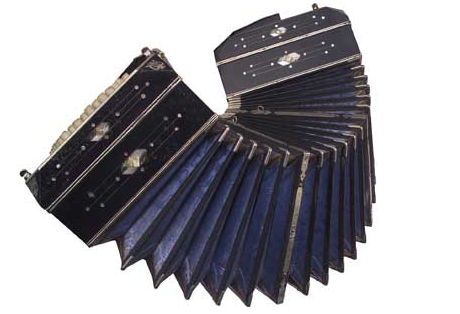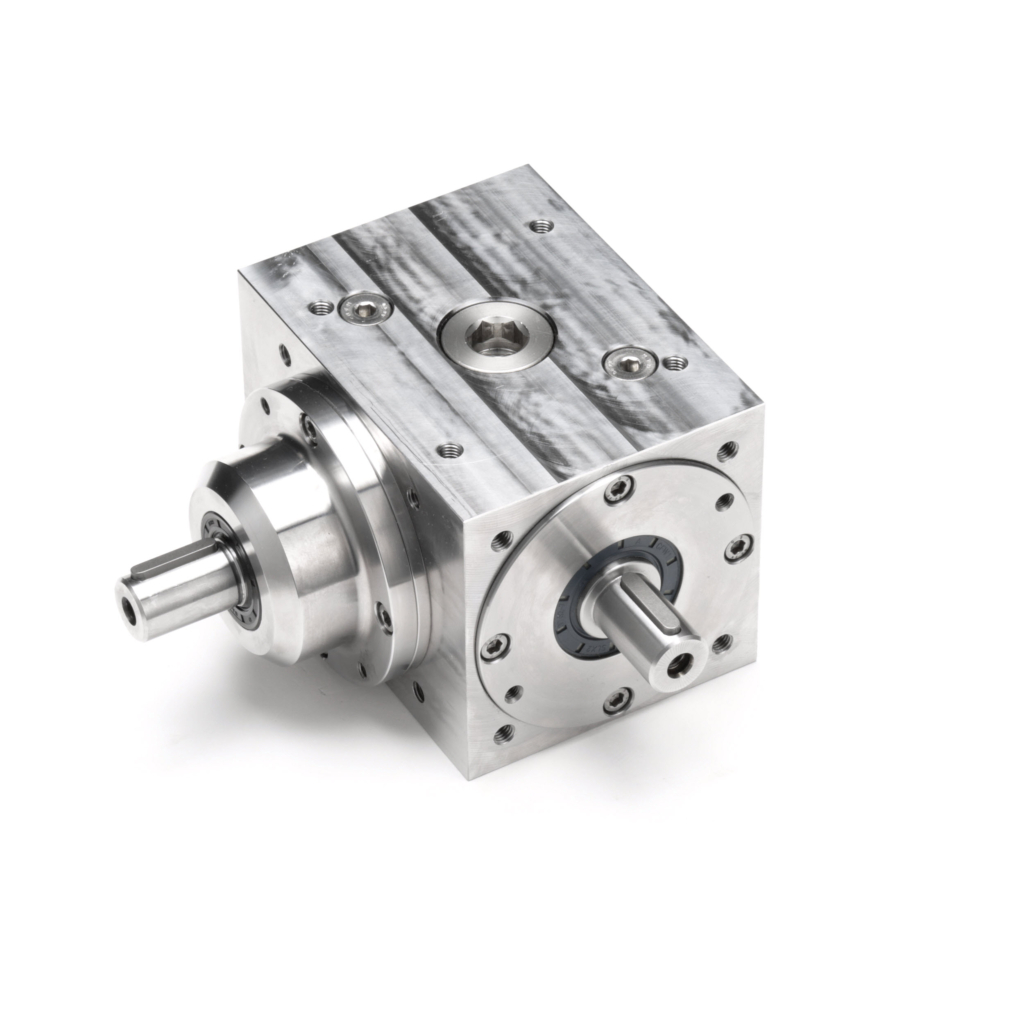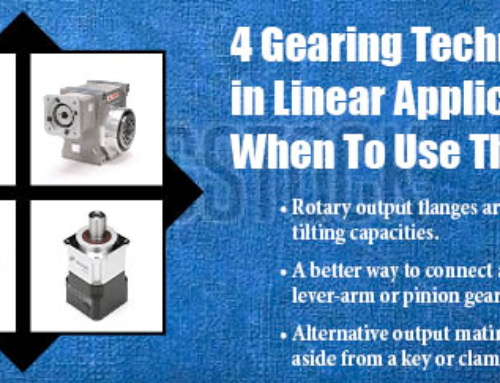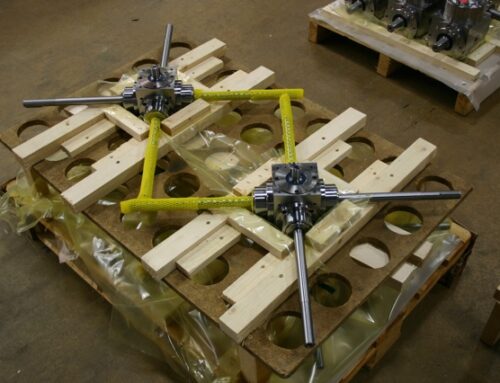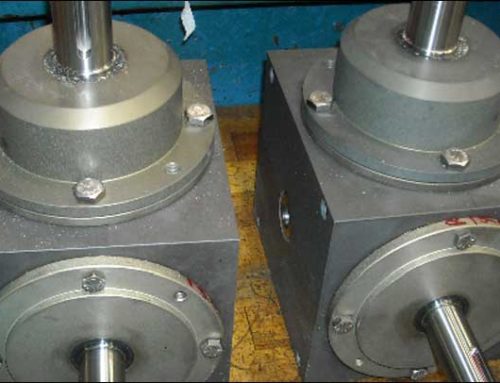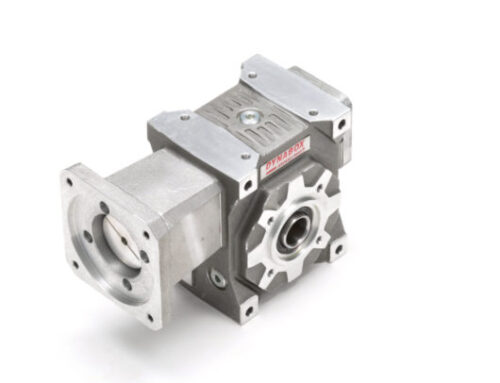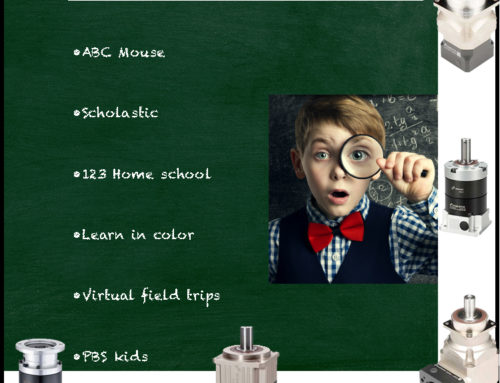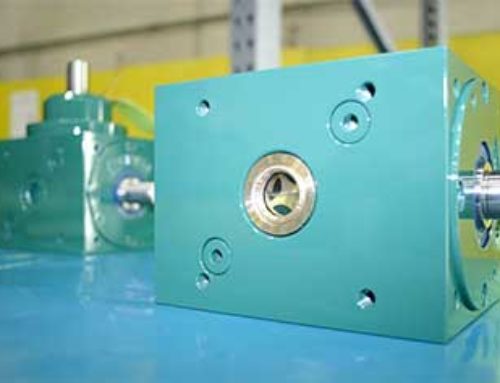Servo systems aren’t the only solution for precision motion control applications. Other gear products can fit the bill when more traditional drive technology is desired.
A Real-World Motion Control Problem
We recently had a customer inquire about a solution for a motion control problem he had in his production of precision bellows. The design was a continuous process of feeding a substrate that was systematically folded and then cut off into either standard or custom lengths. His problem was that the material length between folds was inconsistent, which affected the proper compression of the bellow.
He was presently trying to use industrial spiral bevel gearboxes, with each turn of the bevel box making multiple folds. To us, the problem was immediately obvious. He was having a transmission error.
What Are Transmission Errors in Gearboxes?
Transmission errors are rarely discussed when the topic of lost motion is brought up. Typically, only backlash and torsional rigidity are major points considered. But bad transmission errors are often the culprit when repeatability is a problem.
Transmission error is the angular variance of the output shaft from its expected position. It results from velocity changes as gears engage and disengage from each other. Some also identify it as rotational runout. While bearing quality can affect the accuracy of rotary motion, the quality of gears and their mounting position have a drastic effect on the predictable position of the output relative to the input shaft.
Why Transmission Errors Matter
This problem is readily seen in the printing industry. While other factors that affect registration can be controlled, there is no adjustment for transmission errors. If colors aren’t laid down where they are expected, the sharpness of the print is negatively altered. With impressions being transferred throughout a gear mesh rotation, high-quality gearing and the proper positioning of the gear mesh are of prime importance. Even precision gears, mounted incorrectly, will not provide the rotary motion expected.
In our customer’s case, this was exactly what he was experiencing. The velocity variances within each gearbox output shaft revolution caused different material lengths to be fed prior to folding. So, they just didn’t compress properly.
A Precision Gearbox Solution
The solution we provided was our Tandler spiral bevel gearbox. While already one of the most accurate bevel gearboxes available in it’s standard design, we also offer two lower levels of transmission error options.
To achieve transmission error levels of between 3 and 5 arc minutes, we hand-select gears from our 100% inspected inventory that graded out with the best tolerances from our standard production run. These gears are lapped as matched sets and feature very precise tooth form. It’s this precise tooth form, along with hand fitting and careful assembly, that allows us to provide extremely smooth and predictable rotary motion. For super precision, special gear sets can be produced and fitted to achieve transmission errors below 2 arc minutes. This is an outstanding quality for a spiral bevel gearbox.
To ensure the proper error parameters are maintained, each gearbox is individually tested on an inspection machine with input and output encoders to compare actual with expected input and output shaft positions. Gearboxes may have to be assembled and reassembled several times, including machining the required component tolerances, to achieve the proper tooth flank contact points necessary to get the desired results.
Results That Matter
Based on the material and fold tolerances that had to be held, our customer was able to use our “selected” gear set option. When these gearboxes were installed on his machine, his production quality jumped up dramatically. Although more expensive than the industrial boxes, it was drastically cheaper than trying to install a servo system with multiple axes to control. His continuous production process wouldn’t benefit from the extra complexity.
The DieQua Difference
DieQua offers a wide range of unique gearbox solutions for a variety of applications. Along with that, we provide technical assistance to help choose the appropriate and cost-effective technology that can best satisfy the need. In many cases, these are different from what our customer originally envisioned.

